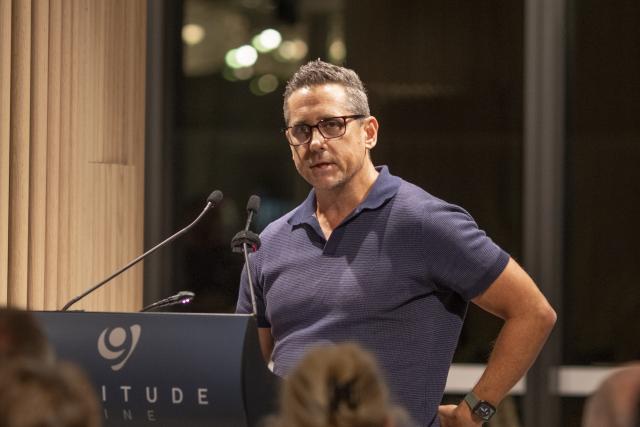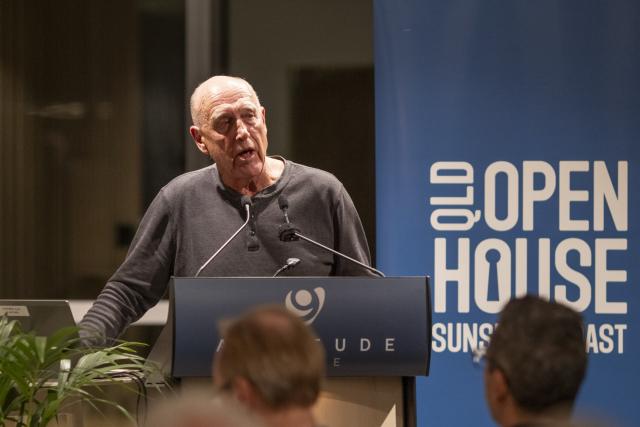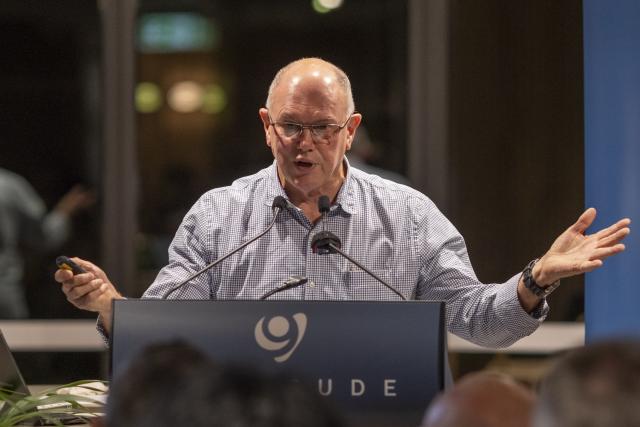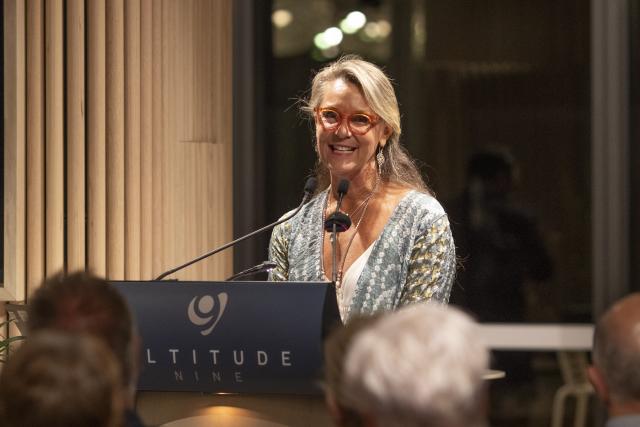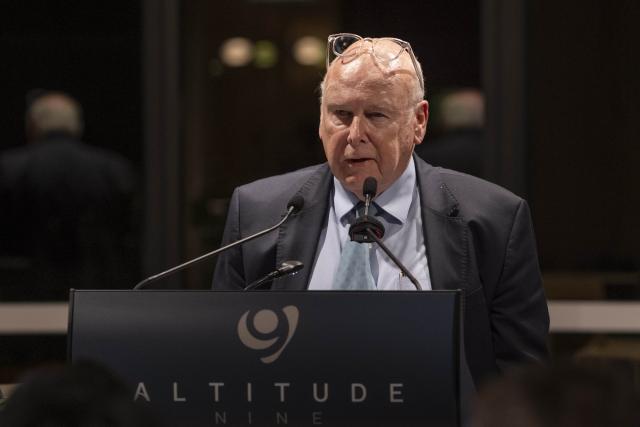
The unique architecture of the Sunshine Coast was celebrated over the past two months with the Sunshine Coast Open House 2023 event but as it wound up last weekend, preeminent architect Dr Noel Robinson warned the region was in danger of losing its identity.
The Sunshine Coast is recognised at a level unprecedented in regional Australia for its distinct architectural heritage, style and experience, known as the Sunshine Coast School of Architecture.
The Open House event, one of 50 held in cities worldwide to celebrate architecture, was officially opened on 5 September by the Queensland Governor Dr Jeannette Young and this year welcomed Noosa Council on board.
The event was punctuated by a series of talks, tours and workshops.
Such was the interest in viewing 25 extraordinary local buildings and meeting their architects, some open houses were booked out within four hours of posting with waiting lists of 400-500 people, said Sunshine Coast Council Urban Design and Architecture team lead Sarah Chalkley, who hosted an Open House Forum bringing together some of the regions celebrated architects to reflect on it’s architecture.
Chair of Sunshine Coast Open House Professor Lyndsay Clare told a packed audience at the forum, the first event held at Altitude Nine on the ninth floor of Sunshine Coast City Hall, they had a collective responsibility to continue as good stewards of the land.
Architecture has to work over time and respond to the environment, climate, landscape and it has emerged as a response to culture, he said.
Dr Clare highlighted some architectural changes and influences over his 44 year and multi-award winning career.
He spoke about verandah spaces occurring more permanently as living spaces, of the shift from darker and poorly ventilated spaces to interiors filled with a sense of light. His projects ranged from houses that “sit quietly in the Sunshine Coast hinterland“, to intergenerational housing in Sydney marked by “cost-effective, uncomplicated, versatile spaces“, to art galleries influenced by the landscape, art and its connection to people.
Among other inspirational Sunshine Coast architects, Dr Clare mentioned Gabriel Poole, renowned for his lightweight, ephemeral houses and Geoffrey Pye.
John Mainwarring told the audience he graduated from architecture 50 years ago, met Gabriel Poole after sailing his yacht into the mouth of the Noosa River in the 1970s and set up an office with him.
He talked about experimenting with verandahs, his use of atriums and his architectural journey with hollow buildings.
Lindy Atkin of Bark Architects said after returning from the UK in 1995 she was introduced to Stephen Guthrie. They won a competition to design the Caloundra Art Gallery and have worked together for the past 28 years since they co-founded Bark Architects.
Over the years Lindy and Steve have worked with and been inspired by Gabriel Poole and Lyndsay and Kerry Clare. They have also gleaned inspiration from architecture discovered during their travels across the world including the Bahamas, South America, Japan and Europe, she said.
Dan Sparks founded Sparks Architects in 2007 but prior to that he learned about architecture and landscape through his six years working with Gabriel Poole after graduating university, he told the audience.
Gabriele listened to people’s ideas and feelings and he would always jump at the opportunity to explore new material, he said.
“His love of detail in systems was evident in what he really stood for – the creation of joyful space – or as he would say, space in which the soul can play,“ he said.
“Gabriel and Lizzy (artist Elizabeth Poole) working together personified everything I love in architecture – integrity of material and structure and respect for and connection to nature and the natural world.
“What really mattered was not awards but if the client was happy and if even in small way it progressed discipline of architecture forward.“
“Never back down, stand by what you believe in, no matter the consequences, live life fiercely, passionately, joyfully,“ are words instilled in Dan by Poole.
As Sunshine Coast Open House 2023 ambassador Dr Noel Robinson praised the event and forum speakers, describing them as “legends and truly inspirational“.
“Note they all demonstrate the importance of regional identity and climatic responsive design methodology – that is at great risk of not being encouraged and implemented at present on the Sunshine Coast,“ he said as he voiced his concerns about the direction of architecture in the region.
“The Sunshine Coast school of architecture is in danger of losing its identity without the support of client bodies and patrons engaging local talent in the development of a distinct response to climate and character,“ he said.
“The unique local character of built and non built form is now at risk. We need to advocate for more responsive design and approval regimes that ensure we get local character on track. There are some serious shortfalls in the engagement of top local talent for local projects as well as serious errors of judgement that have taken place by council decision-making and state governments – apathy, misunderstanding and pure neglect of relevant duties and responsibilities to support appropriate design items that are climatically responsive and demonstrate how to identify and respond to our incredible and unique landscape and environment.
“We should be developing, promoting and approving architecture that says we are the Sunshine Coast through built form that responds to its orientation, takes advantage of aspect, captures prevailing breezes, ensures big roofs and overhangs to shape buildings, captures rainwater, as well as provides support for solar collectors, while being regenerative and sustainable.
“We must design for place, this place, not just anywhere. Planners need to understand, support and approve this direction before they start any assessment process. Council planners, politicians, federal and state governments need to join us in advocating for the place of appropriate design, otherwise we are in danger of losing our identity. It’s not rocket science. We can do it.
“We need to insist on those in authority to truly understand their responsibilities in delivering that outcome to our future generations. This is not about sustainability but it’s about making you feel comfortable and uplifted in the place and connected to the land and the region and not intimidated by poor, inappropriate built form.
“It is sad that much of the recent Sunshine Coast buildings are too internationally driven to be considered inspirational. They are over-scale, not climatically responsive, rarely integrated into landscape and could be located anywhere in the world. We have the local talent here on the Sunshine Coast to deliver outstanding results.
“We need the right support of governance to support local design professionals to deliver regional, responsive and identifiable places by engaging with and supporting local talent to deliver a current and relevant school of architecture.“

